I have returned home safe and sound and Zachary David remained at Tiantai Shan to continue with our studies. Here’s what he has to say about our first camera trap set-up at Tiantai Shan:
“After many setbacks and missteps, from Meg’s bag getting lost, to issues setting up the cellular signal on the camera trap, I have finally begun the reintroduction study at the Wolong Nature Reserve! The purpose of the new study is to create a pre-screening protocol for candidates in the Giant Panda Reintroduction Program to determine which individuals will have the highest chance of survival when released into the wild. We are trying to determine this by analyzing the personality profiles of the candidates in relation to their reaction to a variety of stimuli.
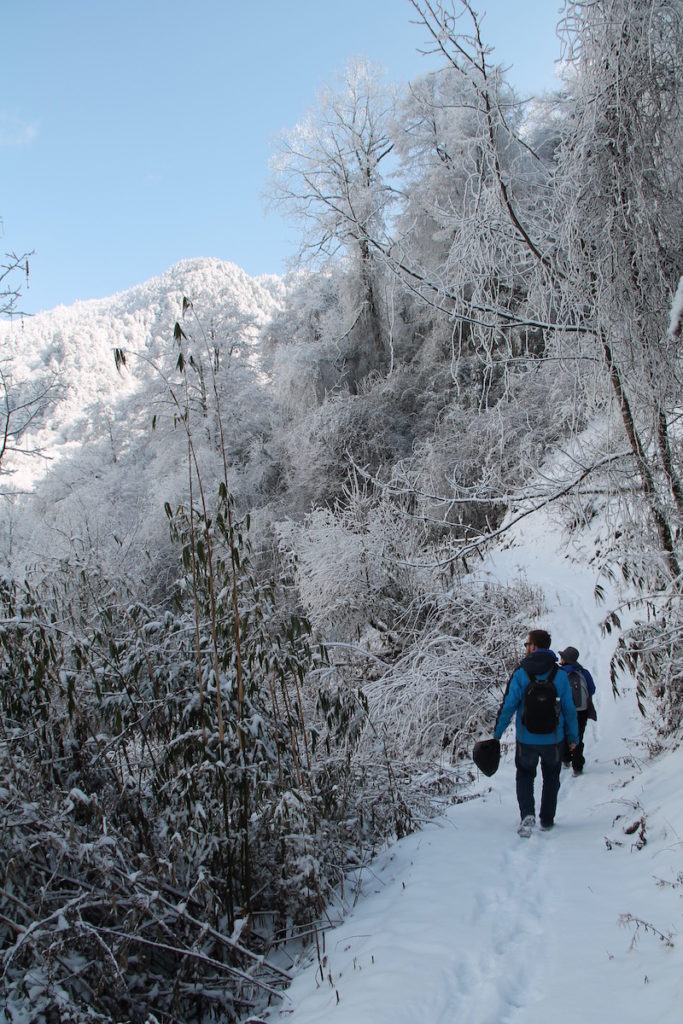
Hiking up to Tiantai Shan Field Station.
This stimuli includes conspecifics scents (male panda urine and scent marking, and female panda urine and scent marking), since scent is an important part of socially integrating into a local release site in the wild. We are also trying to determine food acquisition and food neophobia of the candidates, which means how easily the pandas will find new food sources, and how willing they are to try new species of bamboo that they are unfamiliar with. Meghan, Nate, and the CCRCGP directors are also toying with the idea of testing reactions to typical man-made stimuli that pandas may encounter upon reintroduction (possibly trash cans and clothes with human scent) but, while we’d like to measure giant pandas responses to human stimuli, we’re cautious about habituating them as well so we’re all trying to figure out the best way to approach this particular stimuli.
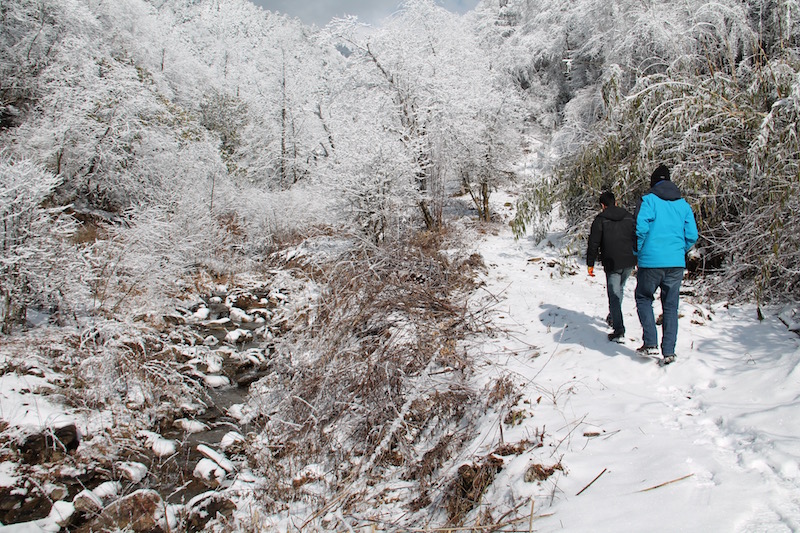
Heading to Si Xue’s enclosure which is about another 300 meters from the Tiantai Shan Field Station buildings.
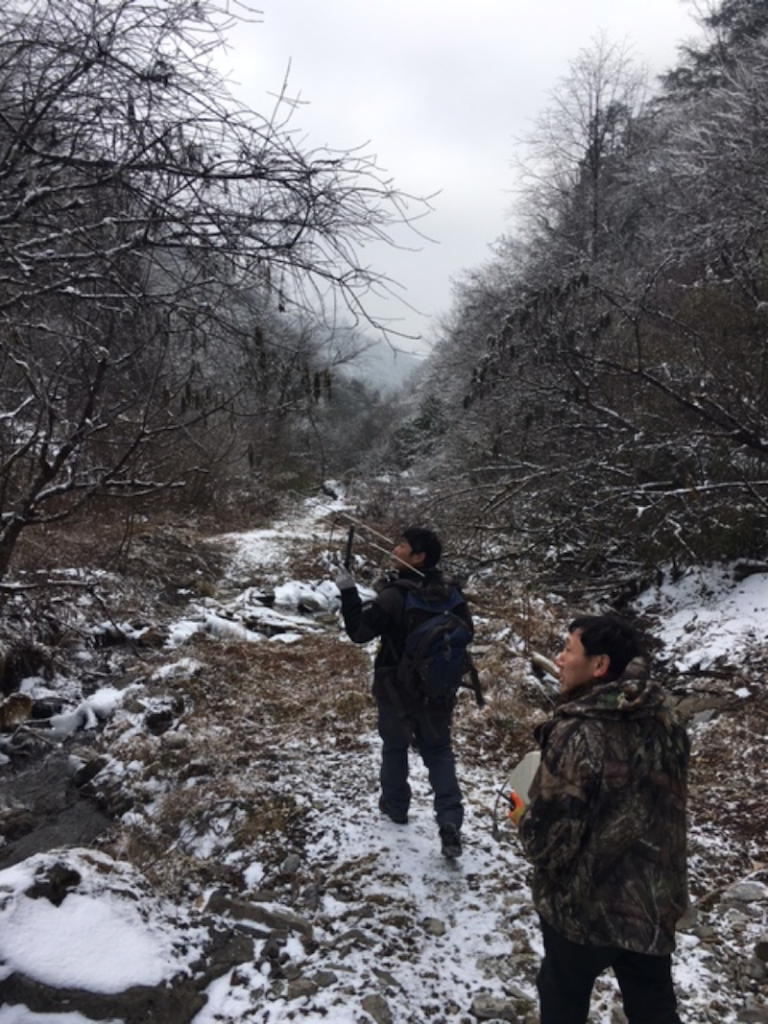
Using Radio Telemetry to determine the locations of the pandas in the reintroduction enclosures (we’re on the outside of the enclosures here and quite a distance from the entry so no chance of pandas spotting us).
In order to determine all these things, requires me to go into their massive (300,000-500,000 sq. m) enclosures, and set up video camera traps along with the stimuli I outlined above. We started with Si Xue and her 18 month old cub’s enclosure. Getting to the site of the camera trap setup (which has to be standardized for each pen) is no easy task, as their enclosures are steep, covered in snow, and thick with bamboo and vines. Most of the way up was done on our hands and knees, as we attempted to crawl underneath the thick vegetation. More than once my backpack got tangled up in the vegetation, completely trapping me, and requiring one of the scientists from the CCRCGP who are helping us to come and untangle me so we could continue.
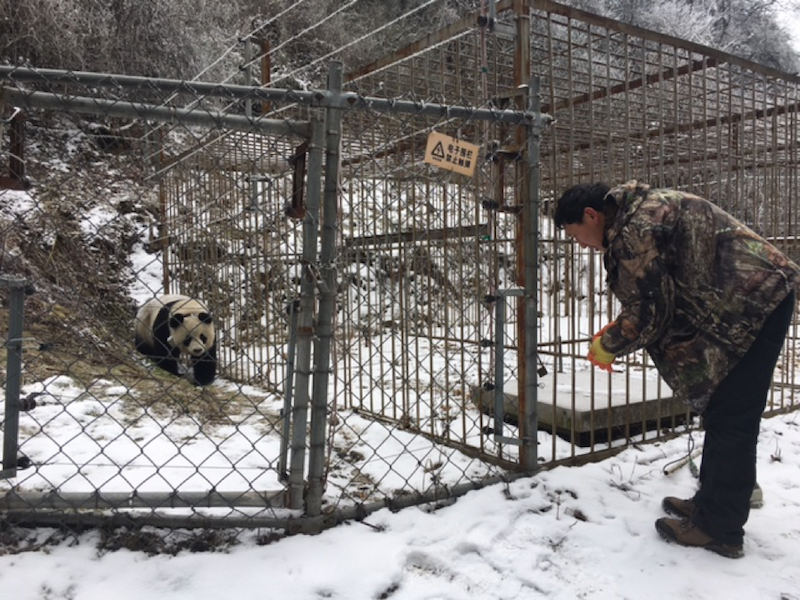
Many people were worried about our safety in the larger wild enclosures. It turns out that they will be luring the mother panda (Si Xue here) out of the enclosure so we can enter safely and set-up our camera traps. As you all know, Si Xue is habituated to human presence so panda suits weren’t necessary at this particular point but once in the pens (and potentially in view of the cubs) we have to wear them.
After going 100m into the enclosure, which doesn’t seem like a lot but was incredibly exhausting, we selected a large pine tree to place the scent, and hid the camera about 5 m away.

Frost on the bamboo leaves.
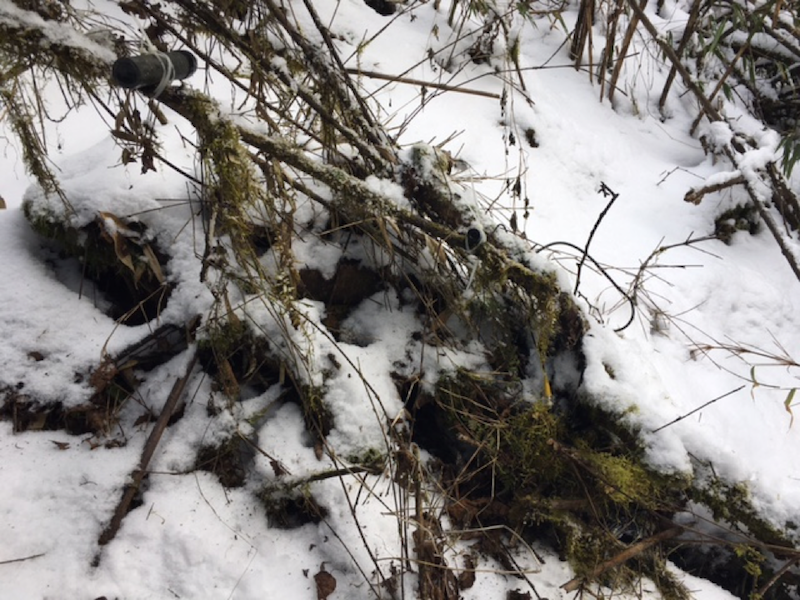
The hidden camera setup
I will go back to check on the camera in 3 days, and hopefully we will have caught both the mother and her cub in the enclosure noticing and interacting with the scent.
-Zachary David”
Zachary will remain at Tiantai Shan for the next couple of weeks so if you enjoy his posts, or have any burning questions, please ask by commenting below!

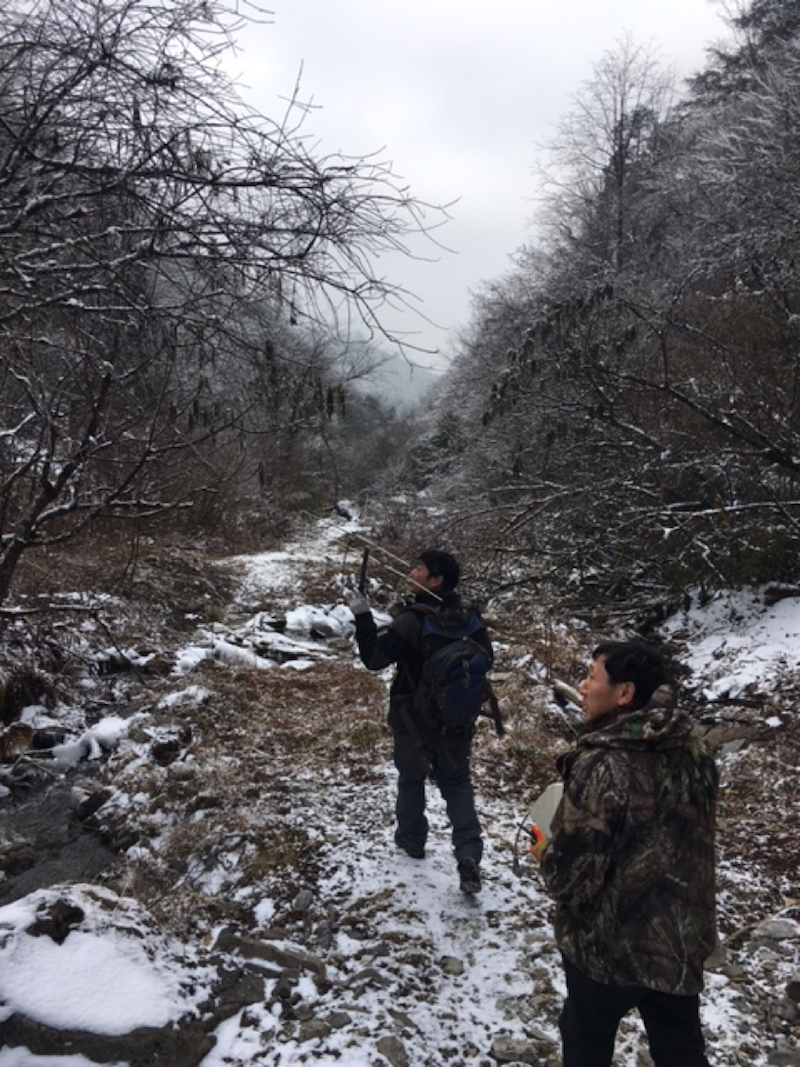
Great job, Zach – not only did you survive that rigorous terrain but you got the camera set up! Thank you for the terrific pictures! I posted your article to Facebook friends because I believe in PDXWildlife and what you are doing! Keep up the good work and please keep sharing with us! Stay warm and be safe!